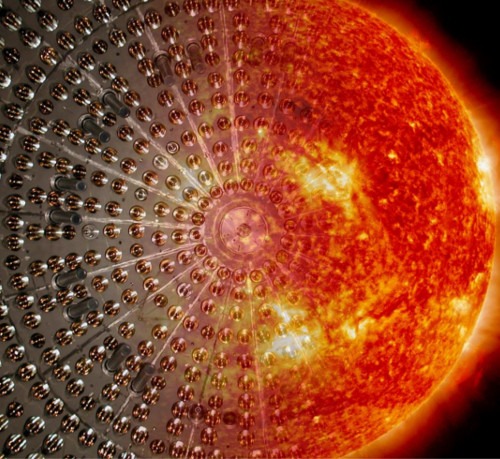Borexino


The Detector:
Borexino is a 280-ton liquid scintillator detector placed at the Laboratori Nazionali del Gran Sasso (LNGS), the largest underground laboratory in the world. Coverage by the 1400 m thick rock provides a cosmic-ray-flux reduction by one million times. The experiment is contained in a stainless steel dome of 18 m in diameter and consists of the Outer Detector (OD) and the Inner Detector (ID). The OD serves as a shield against external background and as a Cherenkov veto for cosmogenic muons. It is filled with 2400 tons of ultra pure water and is equipped with 208 PMTs. The ID consists of a stainless steel sphere and two nested nylon vessels. It is filled with 1040 tons of shielding liquid outside and 280 tons of liquid scintillator inside the inner nylon vessel. There are 2200 PMTs installed inside. The liquid scintillator is based on pseudocumene (PC, 1,2,4-trimethylbenzene) with addition of PPO (2,5-diphenyloxazole) as a fluorescent dye and is the most radio-pure liquid in the world.
Physics goals:
The primary goal of the Borexino detector is the measurement of solar neutrinos from the pp-fusion cycle that powers the sun and the discovery of neutrinos coming from the CNO-cycle. In addition, Borexino is one of the two detectors in the world that can measure geoneutrinos, which can be used as a tool to study the Earth's mantle. The other physics goals of the detector include the study of: muons, neutrino magnetic moment, diffuse supernova background, non-standard interactions, double beta decay searches, and atmospheric neutrinos.
IKP contribution:
- First directional measurement of solar neutrinos in liquid scintillator detectors
- Discovery of CNO solar neutrinos
- Measurement of pp-chains solar neutrinos
- Geoneutrino measurement
- Study of muons and their annual modulation
